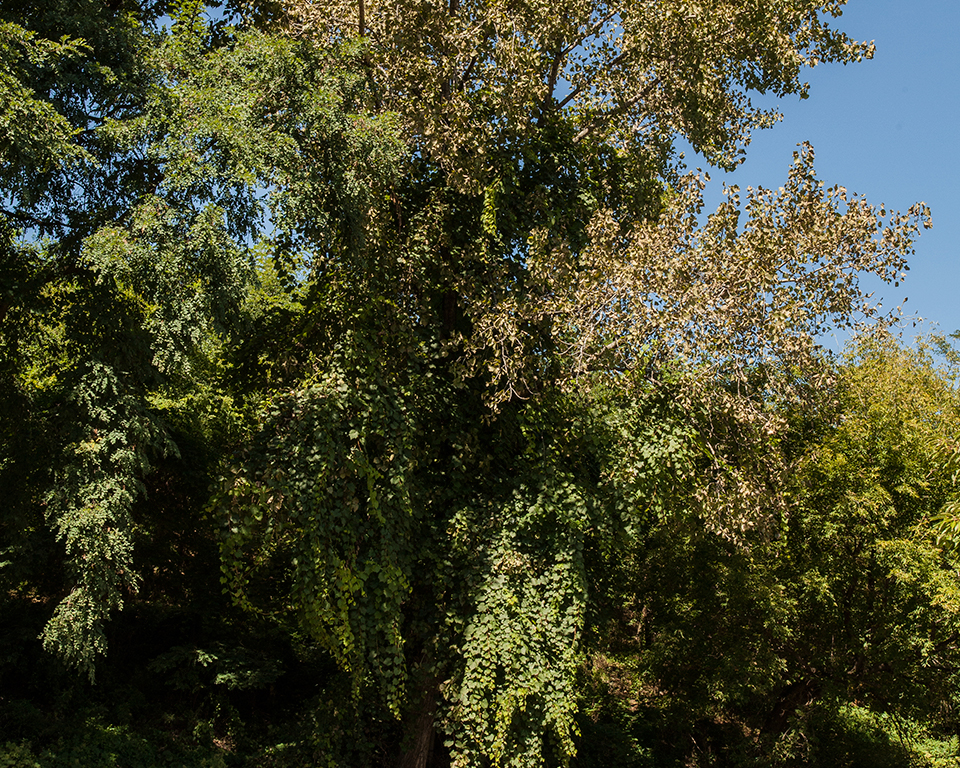POPULUS DELTOIDES – COTTONWOOD, EASTERN

Poplars grow in many different soil types, but prefer moist conditions near water coarses. Trees grow best in full sun and can be 100 feet tall with 6 foot diameter trunks. These huge trees are fast-growing and weak-wooded. Trees can reach to over 100 feet in 30 years on a suitable site with plenty of moisture. Pollen is produced in copious amounts and can lead to hayfever problems in many individuals. Seeds are often produced by the time the tree is just 10 years old. Bark and leaves are consumed by beaver, squirrels, and porcupine. Deer and grouse eat leaves and twigs.
They are not recommended for use near residences but can be planted in wet areas in parks and other large landscapes. Trees are usually found in low-lying areas. They are well suited for planting along water courses to stabilize the banks. Seedlings germinate on nearby land forming large colonies. There are far too many durable trees to choose from to recommend planting these large sized poplars in many urban landscapes. Fruit makes quite a mess on the ground as it falls like snow in summer.
This (including the variety occidentalis) is the state tree of Kansas, Nebraska and Wyoming.
Trees are very susceptible to damage from ice loads. They live to about 75 years old. By that time the heartwood has decayed and numerous birds roost (live) in the hollow including high-holder, sapsuckers, red-headed woodpecker, owls, starling, and bluebirds. A one-hundred twenty-five year old tree would be exceptional. Trees compartmentalize decay poorly and are short lived despite their grand size. This means decay can develop and spread quickly following mechanical injury from construction activities near the tree, vandalism, storm damage, or improper pruning cuts. Poplars are among those susceptible to summer branch drop in Britain. Summer branch drop is a phenomena resulting in failure and breakage of large diameter branches typically on calm summer days.
Wood weighs about 45 pounds per cubic foot. The wood is considered semi-ring porous to diffuse porous which means that there is little difference in size between the spring wood pores and the summer wood pores.

